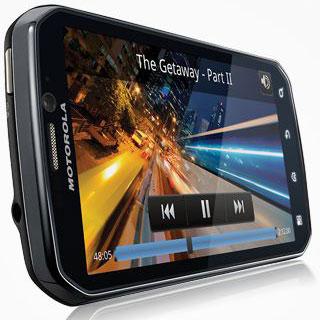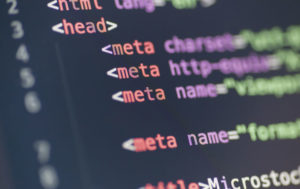
This story was originally published on Aug. 18, 2011, and is brought to you today as part of our Best of ECT News series.
As a Sprint corporate customer I’m referred to as “preferred,” which basically translates to “preferred because I give them increasing amounts of money.” Anyway, it gets me a phone upgrade annually, rather than the non-preferred biannual deal.
The only problem with an annually replaced gadget is you have to figure out how to use it annually too. I’m now on my third Android phone and that’s not including a tablet. They’ve all worked differently — and quirkily.

The best screen-based user interfaces deliver designs suitable for large fingers, constant interruption, minimal scrolling and logical results. Controls designed for large fingers ensure that the app works with even small fingers; interruption-friendly designs handle incoming phone calls; minimal scrolling presents you with all of your commonly used elements at one glance; and providing logical results means that when you press a button, the button does what you think it should do based on your expectation, which in turn is based on your previous experience.
It’s here, in the expected results, where Android has stuck a fly in the ointment.
Android uses a combination of touches, drags, double-touches, stabs, flicks and pinches — among others. These controls are generally hidden. For example, a button can be briefly touched to initiate one response, but it can also be touched and held to initiate a different response.
Looking Around
You can find and use hidden controls on your Android device by following some steps:
Step 1
Turn the device on by pressing and holding the hardware “Power” button. A long-press turns the device on or off. Allow the device to start. An initial screen will display, which is called the “Home” screen. Touch the “Home” button quickly to check out the brief touch function. The “Home” button is the button with the house icon on it. The “Home” screen will change to a multiscreen display. Briefly touch “Home” again, and the original, initial “Home” screen appears.
Step 2
Touch and hold the same “Home” button to see a different result. On the Motorola Photon, the “Recent” screen will display instead of the initial “Home” screen. The “Recent” screen shows recent apps that you’ve used. Your result may be different, though, depending on device. Tablets won’t show anything.
Touch and hold also opens the available options for some buttons and provides more drilled-down results than the brief touch used in the previous step. For example, in the “Messaging” app, touch and hold opens available options like “Delete” and so on, whereas a brief touch opens the broader message or conversation.
Step 3
Touch and hold and at the same time drag if you can’t get a result with a brief touch or touch and hold. Often something unexpected will happen. On the Photon, and maybe your device too, you can touch and hold and then drag on the notification icons in the top left of the screen and the “Notifications Panel” will launch.
Step 4
Open “Contacts” and try a flick-and-drag combination. “Contacts” is usually represented by a silhouetted mug-shot icon. Drag through long contact lists to see items that don’t appear within the initial screen real estate. Flick to scroll quickly. Then stab at the screen when you want the quick scroll to stop.
You can usually get a hidden scroll bar to appear too when flicking. Drag that scroll bar to quickly get to a specific letter in the alphabetically sorted list.
Want to Ask a Question?
Is there a piece of tech you’d like to know how to operate properly? Is there a gadget that’s got you confounded? Please send your tech questions to me, and I’ll try to answer as many as possible in this column.
And use the Talkback feature below to add your comments!





















































